Two RTS classics that are still worth playing today, even if the greatest enemy of both Warcraft armies still ends up being the humble tree.
To return to Warcraft: Orcs and Humans and Warcraft 2: Tides of Darkness in 2024 is to go back to some of the earliest building blocks of the real-time strategy genre. There were, of course, many great RTS games that preceded Blizzard's high fantasy take on the genre - not least Westwood Studios' seminal Dune 2: Battle for Arrakis. But the point remains: considering these games first appeared in the mid-90s, they are naturally going to feel just a tiny bit antiquated by modern genre standards. An obvious point to make, perhaps, but I think it's important to state upfront that these Warcraft Remasters are very much the games as you (probably) remember them, as opposed to being big, sweeping remakes that have been updated with all the recent mod cons you've probably become accustomed to in the years since.
They're certainly what I remember Warcraft being like at the time - though I should state for the record that by the time my family got their first PC in 1996-ish, Warcraft 2 had already arrived on the scene, so we immediately skipped over the original in favour of the one that looked like it had a cool pirate on the cover box. Still, Warcraft 2 quickly became one of about five PC games we owned that I played into the absolute ground at the time (probably very poorly, and only ever through the campaign), and coming back to Warcraft 2 Remastered now put me right back at my beige, boxy monitor again - for better and for worse.
I'm going to be talking about both Warcraft Remastered games together in this review, even though they're available as standalone purchases. They won't come as a pair unless you stump up for Blizzard's Warcraft Battle Chest bundle, which also includes 2020's Warcraft 3: Reforged. They're also not to be confused with the existing (and still available) re-releases of both early Warcraft games, which are individually a little bit cheaper than these Remastered editions, though not by much.
So what are you actually getting with these Remasters over what's already out there? It mostly comes down to spruced up graphics, a lightly remastered soundtrack, and a handful of extra menu settings - which for purists may not be enough to warrant spending the extra £4 it gets you for either Remaster, especially if you're not that keen on the new, cel-shaded artwork. Personally, I quite like the new cartoonish visuals. To me, they feel like a pretty good translation of what those older sprites would look like at higher resolutions, though there are still instances where some of the upscaling on certain map textures looks a little wonky - overly sharp, rocky bog edges were the worst offenders I clocked, but in truth, such tiny things rarely bother me enough to be overtly offensive on the eyes. Besides, you can instantly toggle back to the original graphics in both games (and aspect ratio) if you wish with a tap of F5 at any time.


Visually, Warcraft 1 has understandably had the most work done to it, and if there's going to be any accusations of turning its orcs and humans into squeaky-clean smartphone-esque caricatures, it's probably going to be here. Again, personally, I have no great aversion to them myself, mostly because the Remastered graphics are both infinitely clearer to see and understand on my 4K monitor than the literal soup of pixels I'm presented with when I switch back to the original graphics option. Likewise, I don't know about you, but whenever I try to play the existing version of Warcraft 1 via DOSBox, all I get is a teeny tiny 480x480 window that gets parped out onto my desktop, with no option to even go fullscreen. This alone makes Warcraft 1: Remastered worth considering in my eyes, as the other versions I've tried simply aren't anywhere near what I'd deem playable on a modern PC.
Warcraft 2 is a slightly trickier proposition, in that its current Battle.Net Edition is a lot more playable on modern systems, simply by virtue of being able to open in fullscreen. But having compared both versions over the last week, I still reckon the Remaster is worth the extra £4 here, as regardless of how you feel about the updated visuals, there's no denying that its smoother camera pans, autosave function and ability to replay individual missions from each campaign once they've been completed make it a much more enjoyable experience overall - both in terms of serious play and to dip in and out of further down the line for old time's sake.
 Some of Warcraft 1's upscaled map textures can look a little off in places (see the edges of the swamp above), but overall the new graphical style is much easier to parse at higher resolutions than the original pixel art. | Image credit: Eurogamer/Blizzard Entertainment
Some of Warcraft 1's upscaled map textures can look a little off in places (see the edges of the swamp above), but overall the new graphical style is much easier to parse at higher resolutions than the original pixel art. | Image credit: Eurogamer/Blizzard Entertainment
Of course, the question of whether either game is even worth revisiting in the first place (either for old time's sake or for curious first-time players) is really why we're here. As I said up top, these are going to feel innately old-fashioned at the end of the day, but I've fundamentally enjoyed revisiting them nonetheless. It certainly hasn't been a case of 'I wish I'd left my Warcraft 2 memories crystalised in nostalgic amber', and its underlying loop of building up your economy while amassing troops to ultimately make a big play to wipe out your enemy is still highly compelling - if sometimes more brutal than I remember.
Gold and timber are your two main resources in Warcraft 1, with Warcraft 2 adding oil as a third to power its naval ships. All must be harvested from the map's environment, be that from mines, the surrounding labyrinths of ever-present forests, or oily patches of ocean, before being carried back to their respective depot (your great hall in most cases, or your harbour for that precious oil). On top of that, you've also got to make sure your troops have enough food to sustain them, though this is as simple as just plonking down enough farms and not thinking any more about it. This isn't like The Settlers, where food must be transported and processed and turned into something recognisably edible before it counts as food. The farms just need to exist and that's enough. It's fairly blunt as city-building goes, but that's more or less Warcraft's approach to real-time strategy in general, as simply having the numbers will usually win out against everything else.



As you'd expect, farms and other buildings cost varying amounts of gold and timber to construct, as does training new units and researching their respective upgrades, all of which you'll need to invest in to help bolster your growing army. As missions and maps balloon in size and complexity, more building and unit types get added to your pool of tools over time as well - though how you shape and build your army is still ultimately up to you. It's this sense of freedom that still makes both Warcrafts feel exciting in 2024, as every mission effectively gives you a blank slate to wreak fresh, extravagant chaos on. The shape of the terrain provides new boundaries and weak points to consider at every step, and the temptation to experiment with whatever new toy you have that mission is hard to resist when you're finally given the keys to units such as dragons, griffons, ogres and horse-riding paladins.
It's the kind of approach that allows for constant recalibrations in your strategic thinking, making each mission feel alive with possibility as you work out not just how to turn these new units to your advantage, but also how to best defend against their opposing equivalents. You get elven archers, they get axe-throwing trolls, for example. You get rushy little goblin sappers, they get dwarven demolition squads. On it goes. Admittedly, with so many units to choose from, it's also why sheer brute force is often the best recipe for success compared to more targeted assaults. Neither game does a particularly great job at flagging up (or indeed teaching you) which units are the most effective counters to others, but when the AI so often goes for breadth over depth, it's almost impossible to apply any real tactical nuance in the first place.


This may leave both Warcraft games feeling a little lacking compared to more modern RTSes, but I'd argue that chucking things at the wall and seeing what sticks has always been a core part of Warcraft's overall appeal. I'd also argue that what it lacks in tactical combat it makes up for elsewhere in your general resource gathering. Warcraft 2's isolated oil rigs are particularly susceptible to attack, for example, often being so far away from your main area of concentration and veiled in its thick curtains of fog of war. Mines, too, can be secretly tapped by enemy peasants if you're not looking, and you'll probably want to make sure your peons don't go chopping away all your natural forest defences either, lest you end up with a giant, unchecked hole where enemies can steal in by accident - and steal in they will, too, as its fierce campaign AI isn't afraid to take regular pot-shots at you to keep up the pressure.
It's not just simple city-building, in other words. Every bit of resource gathering is shot through with clear, strategic intention behind it, and factoring in the defence and protection of your economy is often just as important as making sure you've got enough offensive firepower to overwhelm the opposing force. Destroying entire settlements remains a surprisingly large undertaking in these early Warcraft games, and some missions can last upwards of an hour as you build up your forces and wait for the right time to strike. Blissfully, not every mission boils down to one giant offensive manoeuvre. There's also a decent sprinkling of escort and capture missions in each game's pair of campaigns (humans and orcs, respectively), and sometimes you'll be faced with all of these objectives at once - which the Remasters thankfully keep pinned onscreen below your inventory bar rather than locking them away in a separate, hidden menu.
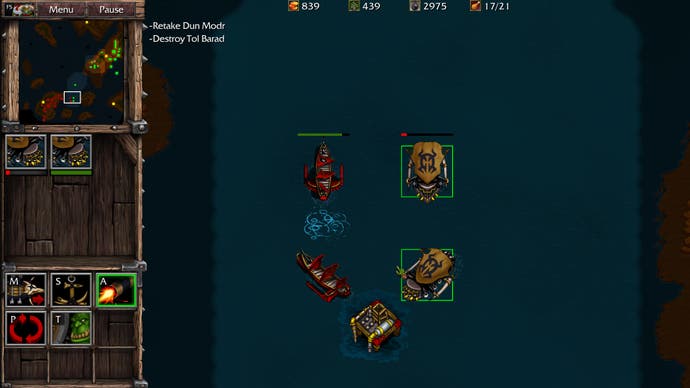 Oil rigs can be very vulnerable in Warcraft 2 unless they're protected by patrolling ships. | Image credit: Eurogamer/Blizzard Entertainment
Oil rigs can be very vulnerable in Warcraft 2 unless they're protected by patrolling ships. | Image credit: Eurogamer/Blizzard Entertainment
Speaking of interface tweaks, one thing I would have liked to have seen brought to the fore a bit more is Warcraft's game speed options. These are still tucked away in the settings menu unfortunately, and as much as I enjoyed watching my peasants/peons go about their business (and poking them indefinitely to provoke different reactions out of them with my mouse - always a delight), there were still plenty of occasions where I longed for a Frostpunk-style fast forward button to just wham through a big load of resource gathering for a spell. Even the default speed - which is already set toward the faster end of the scale in each Remaster - felt interminably slow at points, but it's too much of a hassle to keep tinkering with it when it involves so many unnecessary button presses.
The path-finding capabilities of individual units also leaves something to be desired - which on the one hand just feels like classic Warcraft, but on the other, feels like something that could (and arguably should) have been ironed out for these fancier Remasters. Units will still routinely get stuck on trees when they're on the move, for example, take protracted routes around seemingly innocuous obstacles (often getting themselves into trouble in the process), or just be inordinately pedantic about where and when they choose to attack enemies who are actively taking chunks out of their health bar. All of this can grate in the moment, and can occasionally make some losses feel more like the product of an obstinate AI than a flaw in your own personal strategy. Since I was expecting this to a large extent, it never got to the point where it felt outright broken to me (and certainly not any worse than the other versions of Warcraft 1 and 2 out there). But if anything is going to make newcomers to Warcraft start frothing at the mouth, it's definitely going to be here where they butt heads with it the hardest.
What I do appreciate, though, is finally being able to select more than nine units at a time, making it much easier to command larger squads and launch more impressive invasions than ever before. In truth, I would probably have preferred a more robust AI over this particular improvement, but I'll take it nonetheless - even if said invasions still ultimately amount to everyone crowding round a building in a nice, neat little square and whacking it repeatedly until it bursts into flames. Warcraft was never particularly sophisticated on this front, but its enduring silliness (amped up by its over-the-top Frank Oz-like narrator, burping peons and exploding sheep) is all part of its dumb, juvenile charm.
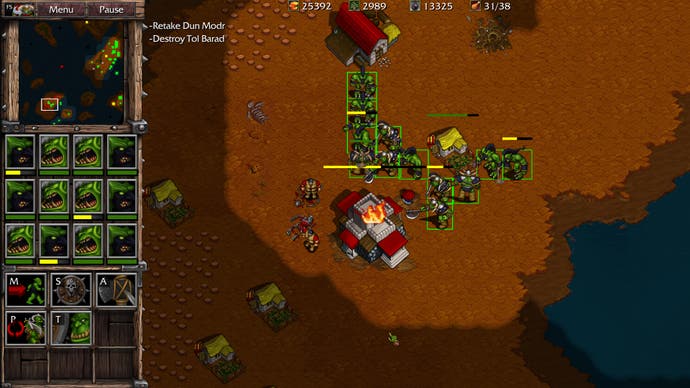 You can now select groups of 12 units to command at once - a small improvement over the previous limit of nine, but one that grows in potential when you ask other groups of 12 to start following specific units. | Image credit: Eurogamer/Blizzard Entertainment
You can now select groups of 12 units to command at once - a small improvement over the previous limit of nine, but one that grows in potential when you ask other groups of 12 to start following specific units. | Image credit: Eurogamer/Blizzard Entertainment
Both games, then, remain very much flawed products of their time, but revisiting these early Warcraft games has been so much more than just an exercise in nostalgia for me this past week. These are still meaty and cerebrally chewy strategy games to sink your teeth into, and they remain as captivating to play now as they did 30 years ago. Yes, other, cheaper versions of these games do exist, but for another £4 apiece, I think there's enough here to warrant picking these new Remastered Editions instead. Archaic quirks aside, they're by far the most approachable versions of each game out there today, and certainly in the case of the original Warcraft, the easiest way to play them on modern PCs. Whether you're looking to fill in the gaps in your genre knowledge or just want a good old-fashioned orc barney, Warcraft 1 and 2 Remastered are both worthwhile excavations of these foundational RTS games.
A copy of the Warcraft Battle Chest bundle was provided for review by Blizzard Entertainment.

 1 month ago
46
1 month ago
46
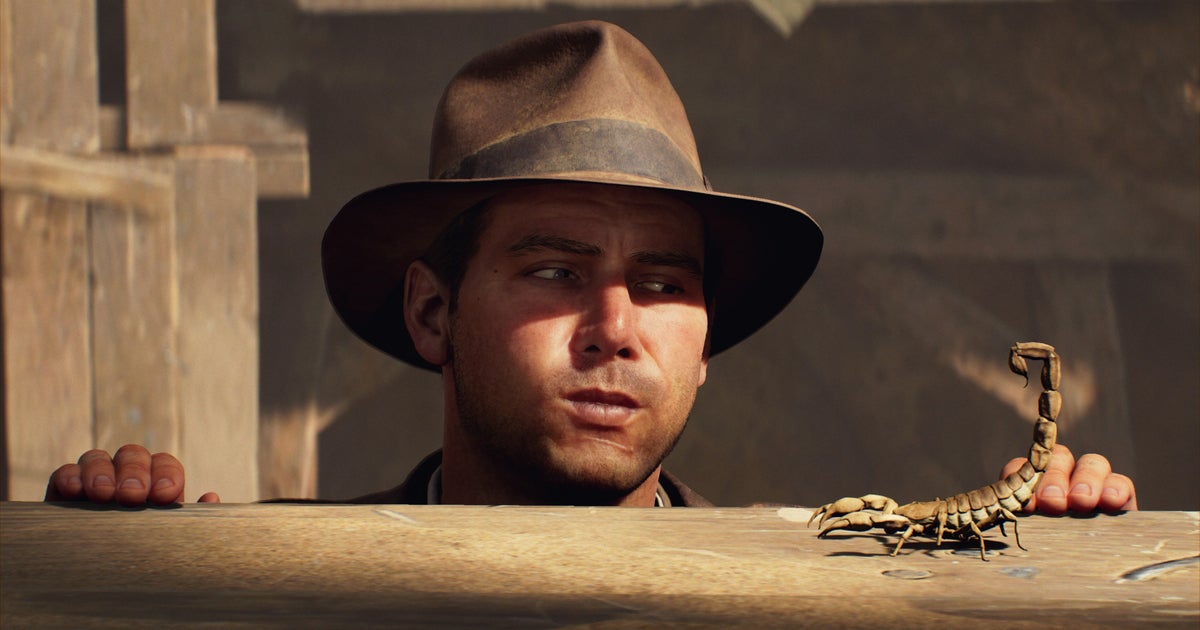
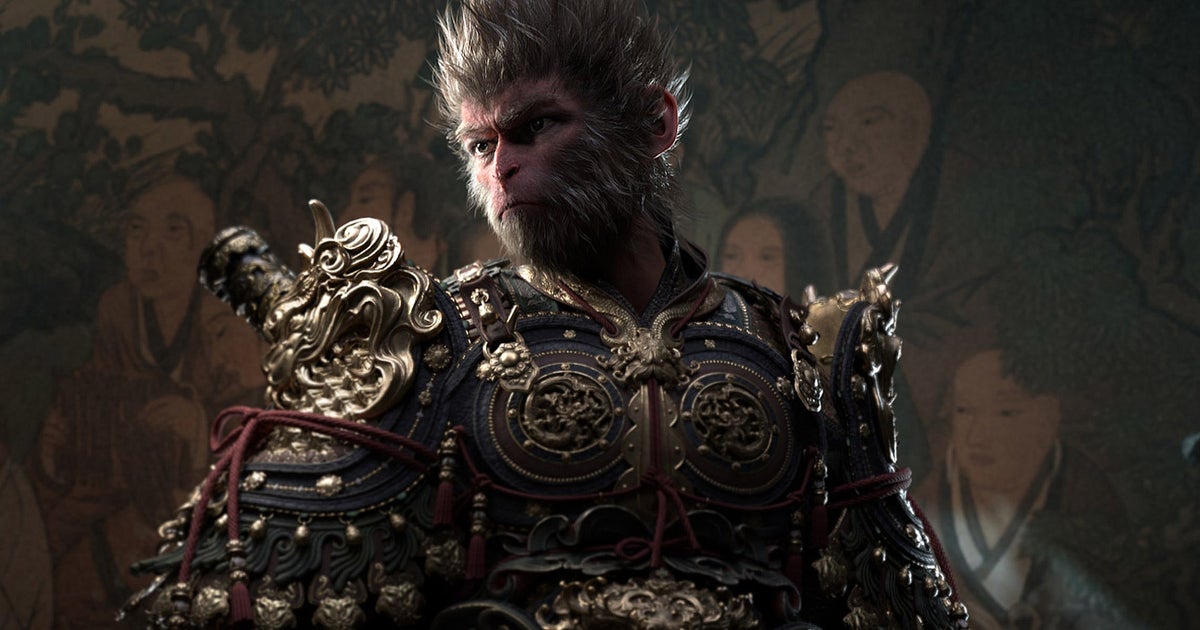

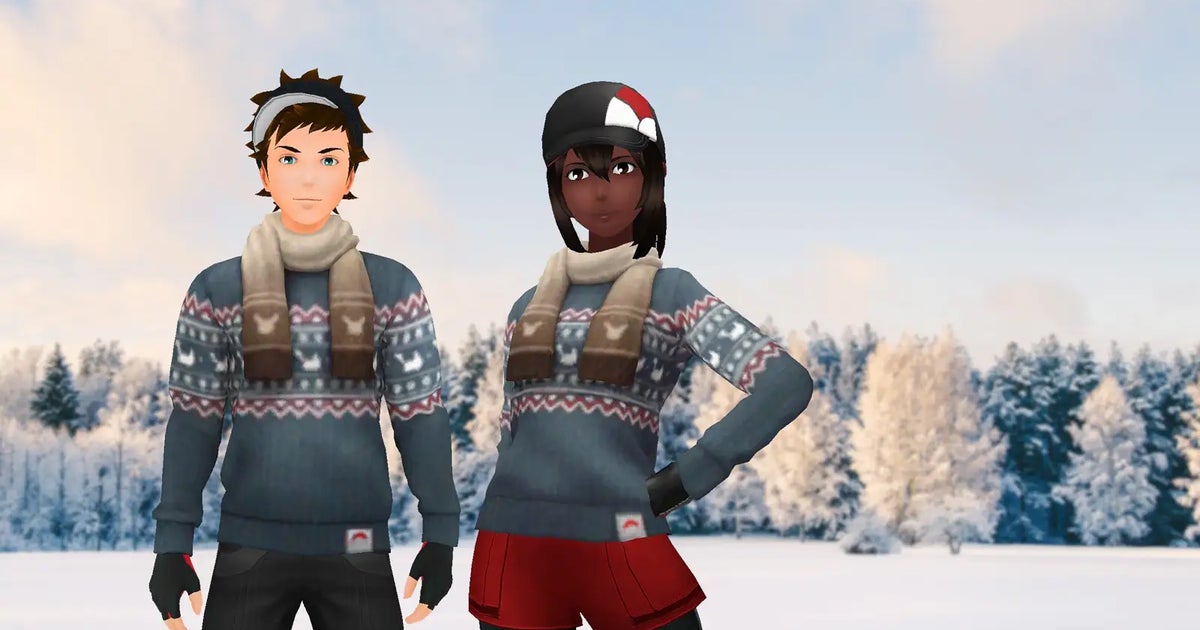

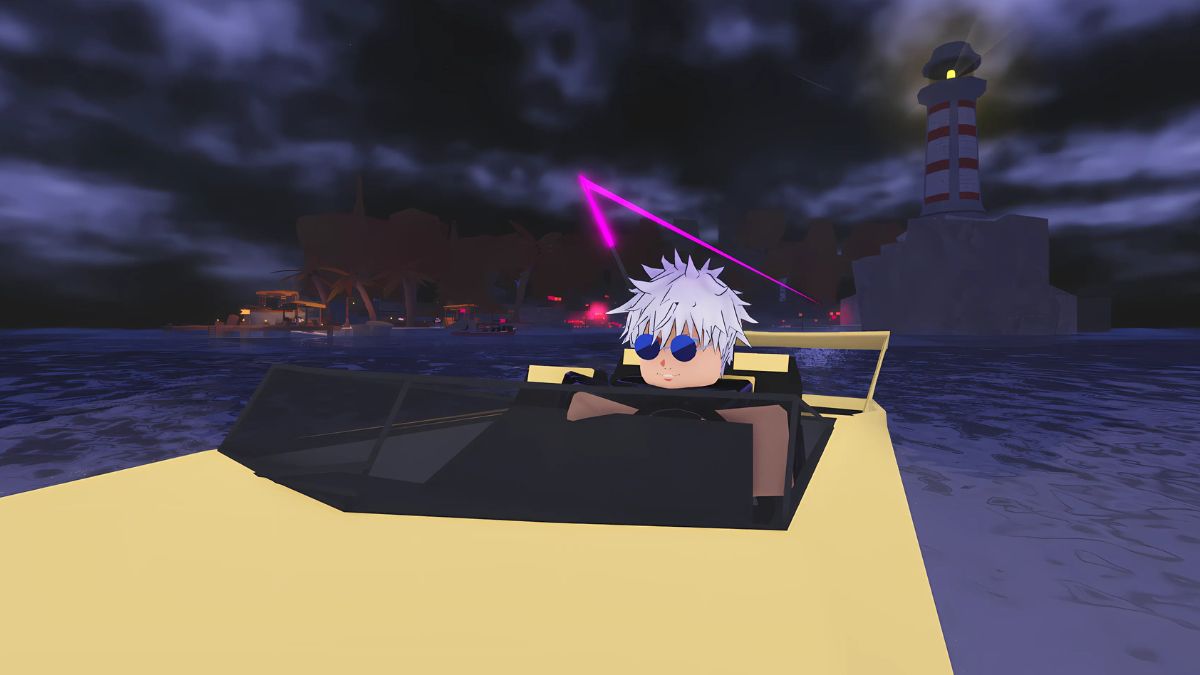
![Anime Reborn Units Tier List [RELEASE] (November 2024)](https://www.destructoid.com/wp-content/uploads/2024/11/anime-reborn-units-tier-list.jpg)

